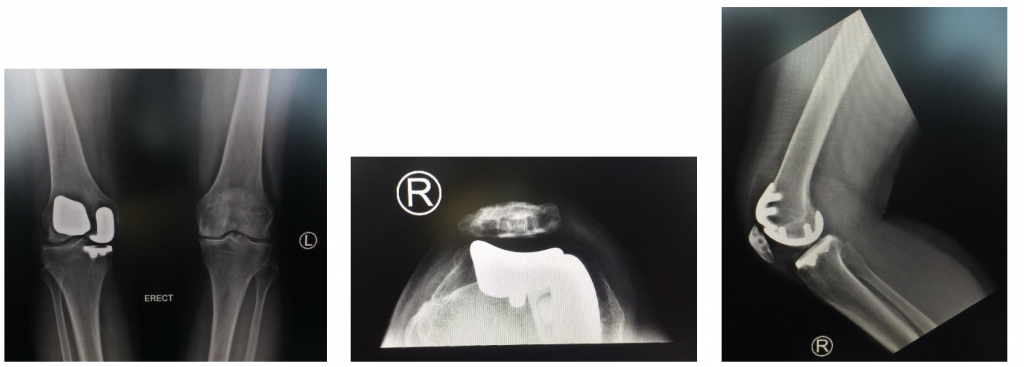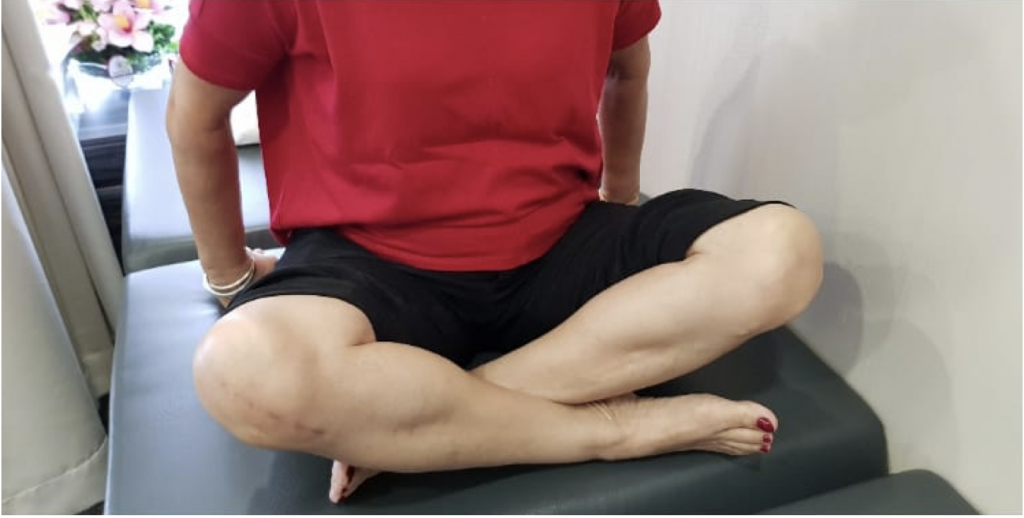Benefits of robotic partial knee replacement (Makoplasty)
A 59 year old lady presented with aggravated knee pain following of fall at her workplace. She had initially consulted Traditional Chinese medicine treatment with limited relief. Following this, she was seen by an orthopaedics specialist with regards to her knee pain symptoms. Having initial evaluation with radiographs and MRI, she was offered right total knee replacement. She presented to Dr Sathappan’s clinic for a second opinion since she had apprehension about proceeding with total knee replacement. Some of her friends who have undergone that procedure often complained of stiffness and inability to fully flex the knee. Moreover, prior to the incident, as well as during this current clinical condition, she was still able to execute high degrees of knee flexion including cross-legged sitting for prayer and yoga activities. Her main concern was decreased walking ability associated with pain, swelling and difficulty in negotiating stairs. She presented to his clinic with these symptoms.
X-rays and MRIs were reviewed with a thorough assessment of clinical symptoms. Clinical examination was consistent with medial joint line tenderness and retropatellar tenderness primarily focused on the right side. As shown in the attached clinical photographs, her symptoms correlated to primarily medial compartment and patellofemoral compartment.
There was a detailed discussion on the treatment options. She can be treated with viscosupplementation injection which however she had tried initially with her previous orthopaedics specialist as well as her general practitioner with little relief. The remaining options were either for arthroscopic procedure which involves chondroplasty. Alternatively, knee arthroplasty. Clinical evidence shows that arthroscopic procedures in older patients such as herself have limited efficacy for a period of 1 – 3 years. This was discussed in detail with the patient. Patient was keen for long-term solution with little compromise to her flexibility that she already had at present. Dr Sathappan assessed her MRIs and her clinical evaluation very thoroughly. She had intact collateral ligaments with no laxity as well as intact cruciate ligaments. There is increasing body of evidence that in such cases, a limited arthroplasty may give her good long-term outcome. He discussed with her on Makoplasty. In this, it is very important to consider replacing the affected medial compartment and the patellofemoral compartment. With this procedure, high precision is executed with the usage of a robot. But the surgeon is still the one performing using his clinical experience and judgement to fine-tune the surgical procedure. The robot merely serves as a precise cutting tool limited by a safety zone called “Haptic zone”. She was keen to proceed and underwent robotic Makoplasty which replaced her 2 affected compartments with no cutting of any of the ligaments and limited disturbance to her muscles soft tissue envelope.

The patient performed very well post-operatively and was able to walk on day 1 after surgery, steps progression on day 2 and was discharged by day 3. This is a remarkable difference to standard conventional knee replacement surgery. She was subsequently seen by Dr Sathappan’s clinic physiotherapist with a rigorous rehabilitation protocol. Within 3 months, she was able to achieve full flexion of her knee and able to perform yoga activities as well as prayer within the temple. The clinical photos taken in the clinic demonstrate the exceptional range of motion that the patient reaches post-operatively. This is a similar case with many of my Makoplasty patients where appropriate clinical evaluation, patient selection, patient education and rigorous post-operative protocol achieves a high degree of optimal results. Dr Sathappan had the opportunity to review her recently a few months ago. She has retained full range of flexion of her knees despite his previous surgery 3 years ago. In fact, she mentioned that opposite knee which had pain in the initial 1-year period prior to the surgery has completely resolved. He informed her this is because her dominant leg which has had an excellent outcome post-operatively has managed to offload her left knee pain and thus given us some borrowed time with regards to any interventional procedure being required. She remains on his follow up in a once in 2-year period.

Share this blog via:





